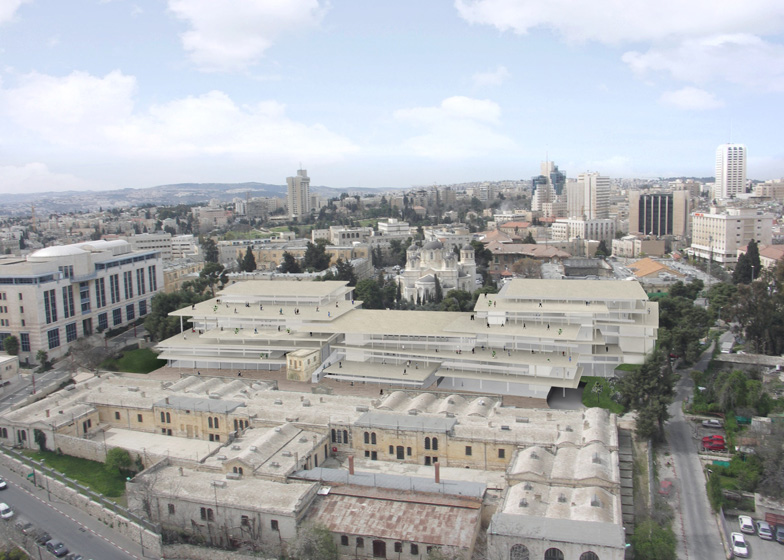News: Japanese studio SANAA has presented designs for a new campus for Israel's leading design school within Jerusalem's historic Russian Compound.
Scheduled for completion in 2017, the new 37,000 square-metre campus for the Bezalel Academy of Art and Design will be constructed in one of Jerusalem's oldest districts, between the Holy Trinity Cathedral and the Museum of Underground Prisoners.
Architects Kazuyo Sejima and Ryue Nishizawa of SANAA are working alongside local firm Nir-Kutz Architects on the design of the building, which is intended to encourage collaboration between the eight traditionally separate departments of the school.
Classrooms and studios will be arranged over a series of staggered horizontal slabs that correspond with the site's natural topography. Numerous ramps and staircases will connect the split levels, while voids in the floorplates will create balconies between floors and increase natural light.
The plans also include a pair of auditoriums, public exhibition galleries and cafes for both students and visitors.
Construction is expected to commence at the end of next year, made possible by a $25 million donation from the Jack, Joseph and Morton Mandel Foundation.
Sejima and Nishizawa, who were awarded the Pritzker Architecture Prize in 2010, have also recently completed a circular production hall at the Vitra Campus in Germany and a sister gallery to the Musée du Louvre in France.
See more architecture by SANAA »
See more architecture in Israel »
Here's a project description from the design team:
The site of the new campus for the Bezalel Academy of Arts and Design is located on the top of a hill in the Russian Compound, overlooking the old city of Jerusalem. The Academy includes several departments comprised of studios, classrooms, workshops and administration offices and of public areas such as exhibition galleries, a store, a café and a cafeteria.
The building is composed of slabs. The slabs are stacked following the natural gradient of the landscape, and all are at different levels. Throughout both the exterior and the interior of the building, the slabs are connected through ramps and stairs so that it is possible to walk freely from one to the other, moving horizontally and vertically.
On the exterior, the slabs connect to form a terraced roof overlooking the city. On the interior, the slabs are detached from one another to create vertical void spaces throughout the building. The void spaces allow visual connection between different parts of the program that are hosted on each slab. As a consequence, each part of the building maintains its independence, but at the same time is fully connected with all other parts. Because of the layout of the slabs, natural light can filter freely through the building both from above and from the sides, penetrating also in those spaces that sit in the middle of the largest footprint areas.
The scale of the building is determined by its context and by its program. The volume is composed to fit properly within the city of Jerusalem and, at the same time, accommodate the spaces necessary for students and faculty of the Academy to work comfortably. The building also fits into the natural context as it mimics the terraced landscape, and resonates with its colour and texture.

